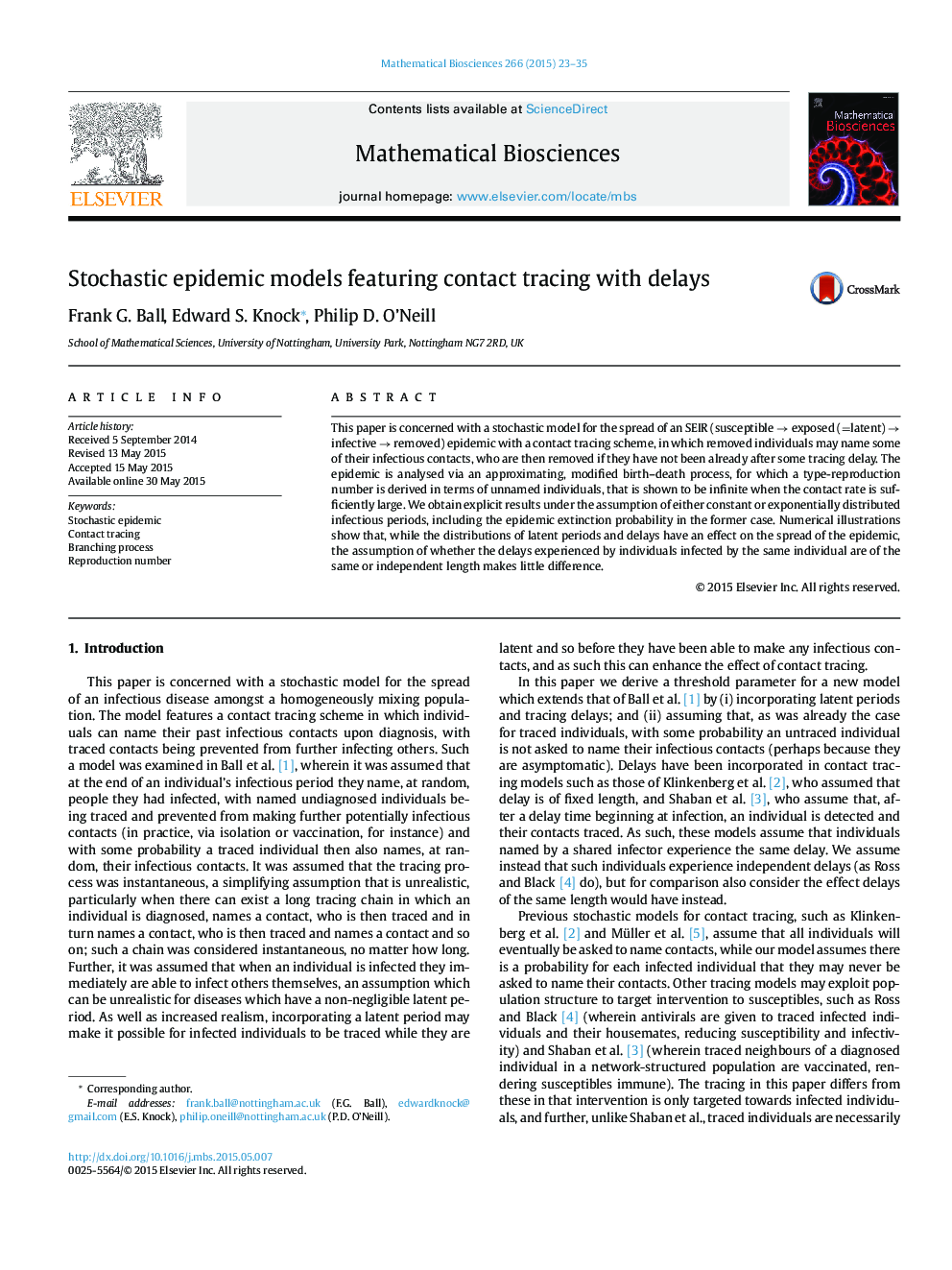| Article ID | Journal | Published Year | Pages | File Type |
|---|---|---|---|---|
| 4500002 | Mathematical Biosciences | 2015 | 13 Pages |
highlights•We model contact tracing with delays for an SEIR epidemic.•A type-reproduction number is derived in terms of unnamed individuals.•Latent periods and delay distributions have an effect on the spread of the epidemic.•Common or independent delays for those with the same infector yield similar results.
This paper is concerned with a stochastic model for the spread of an SEIR (susceptible → exposed (=latent) → infective → removed) epidemic with a contact tracing scheme, in which removed individuals may name some of their infectious contacts, who are then removed if they have not been already after some tracing delay. The epidemic is analysed via an approximating, modified birth–death process, for which a type-reproduction number is derived in terms of unnamed individuals, that is shown to be infinite when the contact rate is sufficiently large. We obtain explicit results under the assumption of either constant or exponentially distributed infectious periods, including the epidemic extinction probability in the former case. Numerical illustrations show that, while the distributions of latent periods and delays have an effect on the spread of the epidemic, the assumption of whether the delays experienced by individuals infected by the same individual are of the same or independent length makes little difference.
